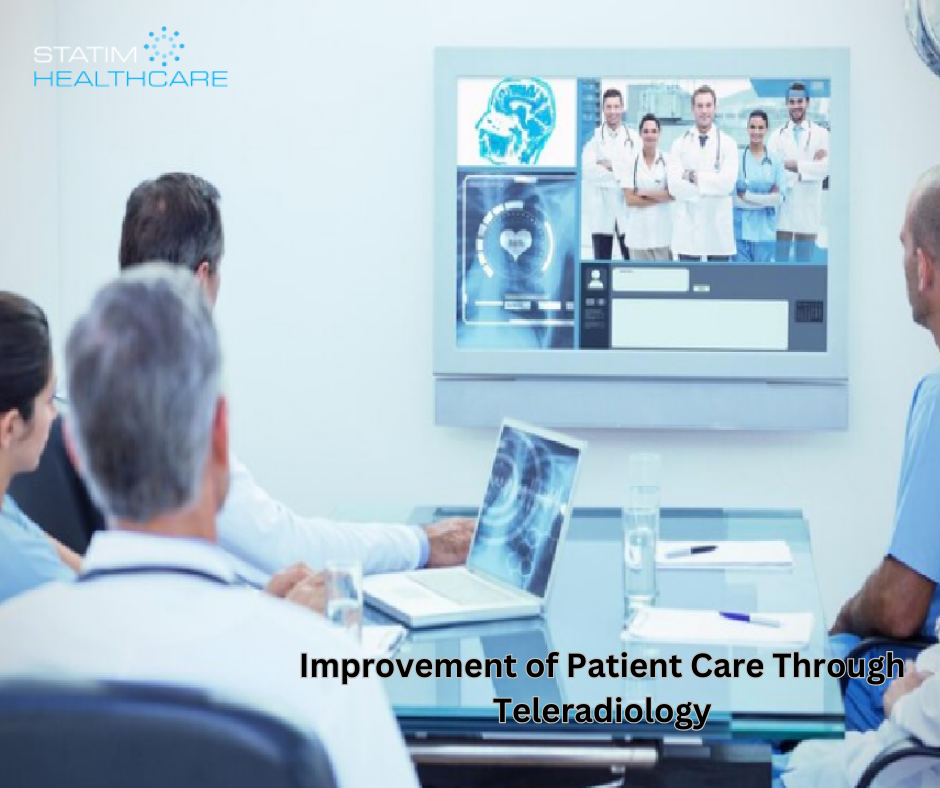The global teleradiology industry is estimated to be worth USD 8.2 billion by 2024, growing at a 19.1% CAGR. Teleradiology is well positioned to provide radiological interpretation as well as access to second opinions from field professionals in times of crisis. While it offers a variety of temporal and specialty-based chances to augment picture interpretation capabilities, the primary focus is on value-directed treatment. Online teleradiology services provider has improved access as well as optimal imaging care in both time and space. picture quality, transmission speed, and picture compression were all considerations a decade ago. Clinical governance, medico-legal issues, and quality assurance are increasingly priorities.
Initially, teleradiology technologies were intended to allow radiologists to provide intramural emergency radiology services from home, with a focus on underdeveloped areas and supplementing specialized coverage. However, the number of emergency department imaging cases tripled between 1994 and 2015, putting a significant strain on radiology departments around the world.
Value-Directed Care
The value-directed care period is focusing on primary care for patients and optimizing patient care. Many studies have revealed that patients who are treated on weekends or overnight receive lower-quality health care than those who are admitted during the week. Data from the Sentinel Stroke National Audit Programme demonstrated that patterns and degrees of care quality altered over time. The role of diagnostic imaging in this care gap remains unknown. Teleradiology reporting service has been shown to improve diagnostic accuracy, organize the disposition of patients from emergency departments, and arrange surgical operations in orthopedic trauma units if an orthopaedist is not present. This also enhances the level of comfort for consulting surgeons while minimizing the risk of litigation for incorrect diagnosis.
Teleradiology reporting service improves emergency service levels by reducing report turnaround time. Some generalists excel at interpreting acute care. A centralized reading room outfitted with the night-day model enhances report quality. This increases radiologist productivity while lowering healthcare costs.
Expanding Access
There is a huge variation in healthcare between rural and urban locations. One-fifth of the population in the United States lives in rural areas. There are more general radiologists in non-academic practices and smaller practices around the United States. In some circumstances, subspecialist interpretations may be valuable. As a result, the best teleradiology services can fill in any interpretation gaps. In rural areas, older people with lower socioeconomic status who have more health problems can be served by concurrent around-the-clock imaging capability and specialized diagnostic interpretations at their local hospitals.
Disaster Management
Teleradiology has been crucial in war-torn Iran, Syria, and Afghanistan. Teleradiology is used by Doctors Without Borders, a well-known non-governmental group, to assist in healthcare outreach. More than half of all radiographs given to them were nondiagnostic due to inadequate exposure and artifacts during film creation. Radiographer training and the transition to computed radiography helped whenever possible. During the COVID-19 pandemic, intramural teleradiology let radiologists work from home, reducing exposure and providing interpretations. The increase in emergency department imaging volume during the epidemic was easily handled by the best center of teleradiology, Statim Healthcare.
AI in Teleradiology
Artificial intelligence (AI) has the potential to increase image interpretation speed, accuracy, and quality in teleradiology. More urgent cases may be prioritized and assigned to radiologists with the greatest availability to offer a high-quality interpretation. AI has the ability to improve scheduling and protocol development, process optimisation, target picture interpretation, intelligent communication, and corporate analytics and operations.
Technology limitations
Clinical information should be used to guide teleradiology interpretations. State-wide teleradiology networks, according to research, resulted in fewer repeat CT examinations, lower cumulative radiation exposure, less time spent in emergency departments, and cost savings. As a result, long-term support and standard PACS and electronic medical record systems are essential to provide information while ensuring the confidentiality of health information. Image acquisition technicians and sonographers should be supervised by radiologists. The healthcare practitioner who requested the image should have easy access to the teleradiologist as well. A stable internet connection with adequate bandwidth facilitates the efficient transfer of radiography images as well as the development and distribution of remote reports. Both the receiving and sending sites should have audible, confidential, and secure peer-review input.
Conclusion
Statim Healthcare is committed to providing the best teleradiology services, showcasing both their adaptability and unwavering dedication to patient care. They not only keep up with the latest advancements in healthcare but also set high standards for quality, accessibility, and innovation. Statim Healthcare isn’t just another player in the healthcare industry; they are driving forces behind improving healthcare outcomes through their unmatched expertise in teleradiology. Their vision extends beyond enhancing patient care; it aims to transform the entire healthcare landscape one precise diagnosis at a time.

